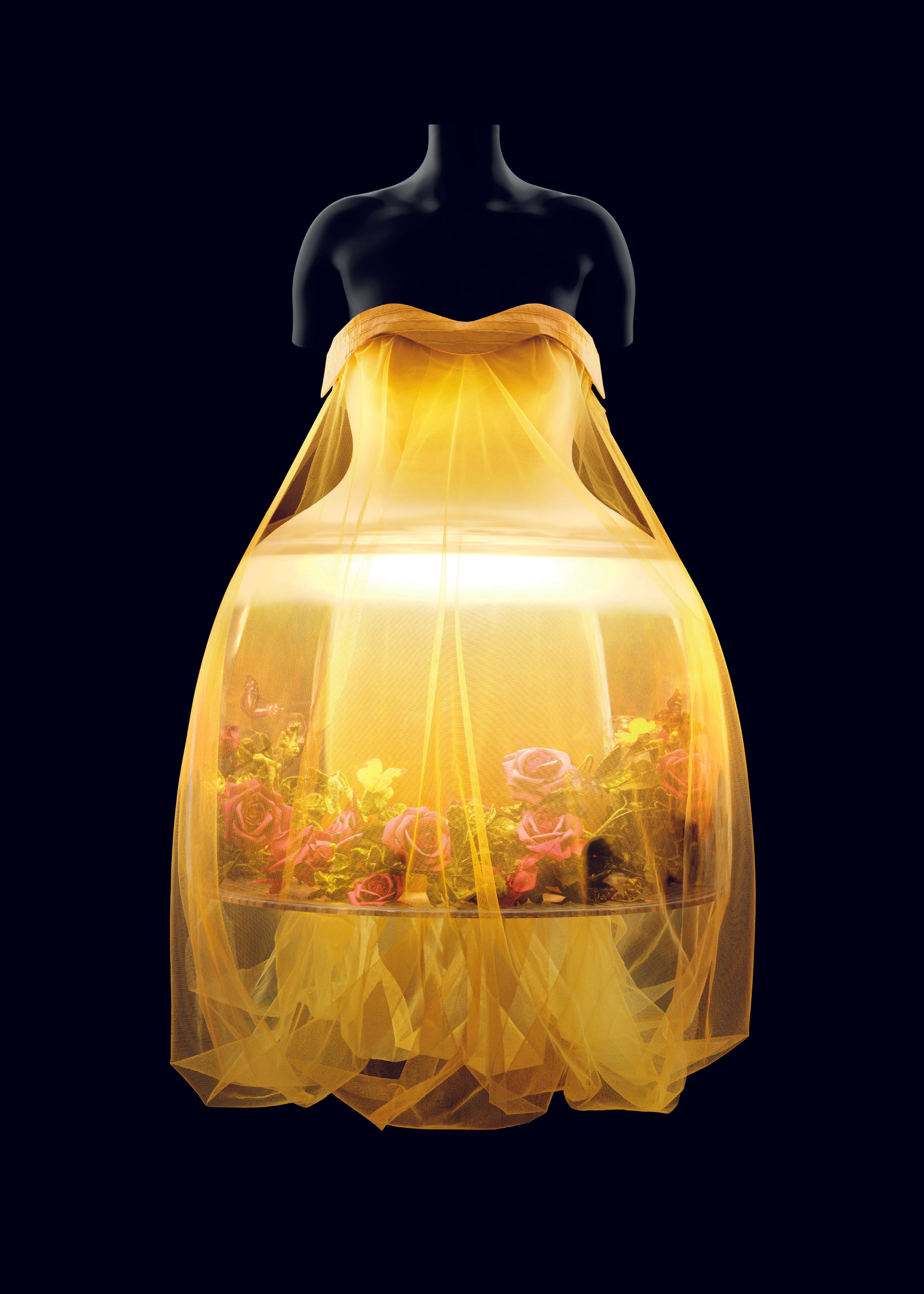"Memento Mori"
Simon Costin's work reflects his interest in decadent literature of the late nineteenth century. His use of taxidermy, seemingly retrieved from some obsessional collector's cabinet, and his incorporation of materials evocative of the late Victorian cult of mourning are poised between poetic morbidity and necromantic glamour. Unlike Damien Hirst's laboratory-like presentation of antiseptic carcasses, Costin's pieces have a fetishistic and totemic allusiveness. The pronounced Gothic aspect of his work is underscored by the carefully crafted boxes in which his pieces are presented. Each one is inscribed by hand, not with the clinical nomenculture of the collecter/amateur but with the subjective introspection of the romantic.
"The 'Memento Mori' necklace was inspired by À Rebours. In the novel there is a description of an extravagant dinner that the hero holds to mourn the temporary loss of his virility. It is an all-black feast featuring 'Turtle soup, Russian rye bread, ripe olives from Turkey, caviare, mullet botargo, black puddings from Frankfurt, game served in sauces the colour of liquorice and boot-polish, truffle jellies, chocolate creams, plum-puddings and black heart cherries.' I imagined myself a guest at the feast and created the necklace as a suitable adornment. It is formed from rotting Victorian jet, skulls, and a pair of huge talons. Many years later I went on to wear the piece at the first of an ongoing series of all-black banquets held every two years and entitled 'Dine with Death.'"
-Simon Costin
"The 'Memento Mori' necklace was inspired by À Rebours. In the novel there is a description of an extravagant dinner that the hero holds to mourn the temporary loss of his virility. It is an all-black feast featuring 'Turtle soup, Russian rye bread, ripe olives from Turkey, caviare, mullet botargo, black puddings from Frankfurt, game served in sauces the colour of liquorice and boot-polish, truffle jellies, chocolate creams, plum-puddings and black heart cherries.' I imagined myself a guest at the feast and created the necklace as a suitable adornment. It is formed from rotting Victorian jet, skulls, and a pair of huge talons. Many years later I went on to wear the piece at the first of an ongoing series of all-black banquets held every two years and entitled 'Dine with Death.'"
-Simon Costin
Artwork Details
- Title:"Memento Mori"
- Designer:Simon Costin (British, born 1963)
- Date:1986
- Culture:British
- Medium:a) wood, metal, bone, claw, synthetic, jet, crystal, bone, hematite; b) paper, cotton, silk; c) paper
- Credit Line:Alfred Z. Solomon-Janet A. Sloane Endowment Fund, 2006
- Object Number:2006.354a–c
- Curatorial Department: The Costume Institute
More Artwork
Research Resources
The Met provides unparalleled resources for research and welcomes an international community of students and scholars. The Met's Open Access API is where creators and researchers can connect to the The Met collection. Open Access data and public domain images are available for unrestricted commercial and noncommercial use without permission or fee.
To request images under copyright and other restrictions, please use this Image Request form.
Feedback
We continue to research and examine historical and cultural context for objects in The Met collection. If you have comments or questions about this object record, please contact us using the form below. The Museum looks forward to receiving your comments.
